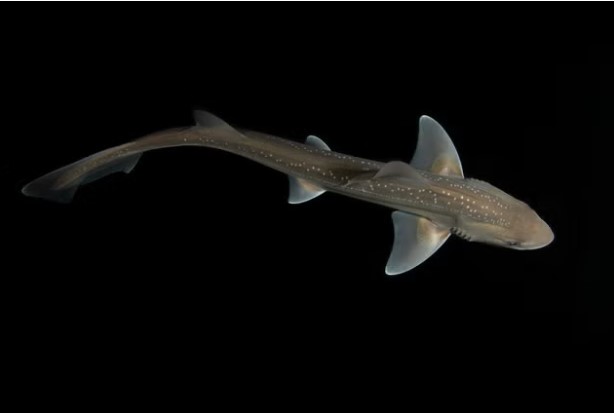Sharks Talk Back: What Their Sounds Reveal About the Ocean's Greatest Predators

Sharks are not the silent killers we thought, listen to the sounds they make
Scientists have filmed New Zealand’s rig sharks making noises in the world’s first reported incidence of active sound creation by any shark species.
More than a thousand fish species are known to make noises for a variety of purposes, including mating and predator defense.
Although it is well known that cartilaginous fish, such as sharks and rays, use sound to communicate, track prey, and navigate safely underwater, they are not known to make sounds on their own volition.
For the first time, a 2022 study revealed that a stingray species makes clicks when a diver approaches it.
According to a recent study, researchers intentionally use short, sharp clicks with relatively high peak frequencies when handling rig sharks.
More than a thousand fish species are known to make noises for a variety of purposes, including mating and predator defense.
Although it is well known that cartilaginous fish, such as sharks and rays, use sound to communicate, track prey, and navigate safely underwater, they are not known to make sounds on their own volition.
For the first time, a 2022 study revealed that a stingray species makes clicks when a diver approaches it.
According to a recent study, researchers intentionally use short, sharp clicks with relatively high peak frequencies when handling rig sharks.
Did you know? You can comment on this post! Just scroll down
The recordings, published in a new study in the journal Royal Society Open Science, hint that the sounds are created by these small sharks forcefully snapping their flattened teeth.
Rig sharks grow to about 150cm (5ft) in length and are endemic to shallow estuaries around New Zealand.
They mainly feed on crabs and other small crustaceans and are preyed upon by larger sharks.
Scientists suspect these small sharks produce these sounds in response to disturbance or distress.
In the study, researchers assessed recordings captured from 10 rig sharks as they were handled underwater in tanks at the Leigh Marine Laboratory in New Zealand.
Scientists noted that "rigs were opportunistically observed to produce clicking sounds underwater during this brief handling time."
The amount of clicks the sharks made throughout each 10-second recording interval was measured.
According to researchers, the sharks made nine clicks on average every 20 seconds, and the majority of these sounds were accompanied by body movements such as shifting from right to left, suggesting that they were probably a "startle response."
About 25% of the clicks were accompanied by explosive sway, which is characterized by forceful side-to-side bending of the head and body; roughly 70% were accompanied by calm swaying, which is characterized by gradual side-to-side movements; and 5% of clicks happened without any discernible body movements, according to the researchers.
The amount of clicks the sharks made throughout each 10-second recording interval was measured.
According to researchers, the sharks made nine clicks on average every 20 seconds, and the majority of these sounds were accompanied by body movements such as shifting from right to left, suggesting that they were probably a "startle response."
About 25% of the clicks were accompanied by explosive sway, which is characterized by forceful side-to-side bending of the head and body; roughly 70% were accompanied by calm swaying, which is characterized by gradual side-to-side movements; and 5% of clicks happened without any discernible body movements, according to the researchers.
They wrote, "This study would be the first to show that sharks can produce sounds to the best of our knowledge."
To validate the mechanism and ascertain the sound's additional applications and biological relevance, researchers urge more investigation.
The rigs' ability to detect their own clicks is likewise unknown.
Scientists came to the conclusion that more behavioral observations are required to test this theory and confirm if rigs generate clicks in more natural settings free from human intervention.
To validate the mechanism and ascertain the sound's additional applications and biological relevance, researchers urge more investigation.
The rigs' ability to detect their own clicks is likewise unknown.
Scientists came to the conclusion that more behavioral observations are required to test this theory and confirm if rigs generate clicks in more natural settings free from human intervention.
Article Posted 2 Months ago. You can post your own articles and it will be published for free.
No Registration is required! But we review before publishing! Click here to get started
One Favour Please! Subscribe To Our YouTube Channel!
468k
Cook Amazing Nigerian Dishes, Follow Adorable Kitchen YouTube Channel!
1.1m
Like us on Facebook, Follow on Twitter
React and Comment
Click Here To Hide More Posts Like This
Watch and Download Free Mobile Movies, Read entertainment news and reports, Download music and Upload your own For FREE.
Submit Your Content to be published for you FREE! We thrive on user-submitted content!
But we moderate!

















